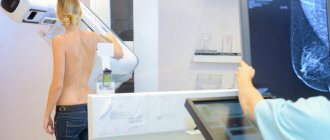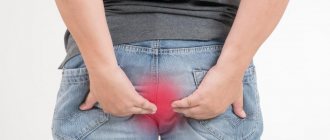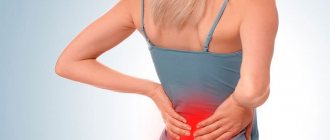Co-author, editor and medical expert - Klimovich Elina Valerievna.
Number of views: 21 247
Last updated date: 11/16/2021
Average reading time: 3 minutes
Pain in the upper abdomen is perhaps one of the most common complaints with which patients consult a gastroenterologist. This is a rather complex symptom that can be triggered by a number of factors. It can be temporary or permanent and indicate the occurrence of a particular digestive tract problem that needs to be addressed.
Causes of pain in the upper abdomen after eating
Poor nutrition
Very often, the cause of abdominal pain after eating is nutritional errors. Failure to adhere to the daily routine, overeating, late dinner, dry food, rapid absorption of food, and low fluid intake during the day can lead to painful sensations. Also, fatty meat, dairy products, rough plant foods, brown bread, canned food, vegetable marinades, fructose, sorbitol, lutein and alcoholic beverages can trigger pain in the upper abdomen.
Food allergies
One type of food intolerance, leading to nausea, vomiting, pain in the stomach and upper abdomen, and various skin manifestations, is an allergy. The most powerful allergens include cow's milk, fish proteins, eggs, and seafood. Some vegetables, fruits and cereals (wheat and rye) can also provoke the development of an allergic reaction.
Digestive system diseases
Sometimes pain in the abdomen or directly in the stomach is one of the symptoms of diseases of the digestive organs. Regular or acute pain, accompanied by indigestion and increased body temperature, is a reason for mandatory consultation with a doctor.
to come back to the beginning
Types of pain and symptoms
Abdominal pain is possible in the following manifestations:
- spicy. Severe pain that occurs suddenly;
- chronic. The pain intensifies gradually, in many cases over a month or more;
- chronically recurrent. The pain occurs periodically - it appears suddenly and just as suddenly goes away, appears again after a certain period of time;
- tonic. The main characteristic of such pain is strong muscle tone and the appearance of compactions. Pain may also be accompanied by spontaneous contraction of muscle fibers;
- clonic pain – supplemented by rhythmic muscle spasms;
- burning (“cuts”, “aches”) pain – reminiscent of a feeling of hunger.
The pain can be localized in the umbilical region, the upper part of the peritoneum (hypochondrium), below the navel on the right or left, and the entire abdomen can also hurt.
A patient complaining of a stomach ache will exhibit different symptoms. Pain may be characterized by:
- colic – paroxysmal stabbing sensations;
- spasms - spontaneous contractions of muscle fibers with simultaneous blanching of the skin. In some cases (depending on the type and specificity of the disease), a painful abdomen may be accompanied by fever and bleeding;
- strong burning sensation;
- feeling of fullness. For example, a feeling of bulging in the lower back may indicate problems with the colon;
- cyclicality (either increasing or decreasing pain intensity);
- increased gas formation;
- itching in the anal area;
- discomfort in the abdomen during a period of rest, disappearing during movement. This symptom may indicate a circulatory disorder in the abdominal cavity.
The nature of pain in the upper abdomen after eating
Acute intense pain
This feeling in the upper abdomen can be caused by food poisoning, overeating, constipation, indigestion, physical fatigue, muscle tension, injury, viral or bacterial infection, various psychogenic factors and many other reasons, sometimes not amenable to diagnosis.
Burning pain
Burning pain in the upper abdomen is often a consequence of eating hot, salty, sour or spicy foods, which irritate the gastric mucosa and lead to increased secretion of gastric juice.
Constant nagging pain
Most often it occurs due to overeating, eating dry food or due to quickly eating food on the go without first thoroughly chewing. Sometimes such a condition can develop as a reaction to certain foods.
to come back to the beginning
Gastritis, ordinary and not very
The most common disease that causes pain in the epigastric region is gastritis, that is, inflammation of the gastric mucosa. Depending on the nature of the disease, gastritis can be acute or chronic.
The danger of chronic gastritis is that most cases of stomach cancer develop against the background of a long course of this seemingly harmless disease.
The type of gastritis is divided into superficial gastritis, in which only the mucous membrane becomes inflamed, and atrophic - in this case, against the background of inflammation, the stomach glands that produce hydrochloric acid gradually die.
| How can you examine the stomach? | |
| Unfortunately, not every person can safely undergo gastroscopy. The test is not a pleasant one. Therefore, now one of the most common (albeit paid) services is gastroscopy in a dream. If you have no contraindications to general anesthesia, then you can sleep through the entire examination with a clear conscience and not get negative impressions. Another innovative research method involves the patient swallowing an endoscopic capsule. A small device goes on a journey through the digestive tract and “makes a movie” along the way. Due to the fact that such a study is the least traumatic and most informative (the esophagus, stomach and entire small intestine are examined), it costs much more than all alternatives. | |
Unfortunately, it is possible to identify the type of gastritis and, accordingly, decide on treatment only after an examination, colloquially called “gastroscopy” - during this procedure, an endoscope is inserted into the upper parts of the gastrointestinal tract.
In fact, the study is called “esophagogastroduodenoscopy”, because during the procedure the doctor examines the patient’s esophagus, stomach, and duodenum. It is very important to carry out this study in as much detail and quality as possible, since gastritis very often “adjacent” to duodenitis (inflammation of the duodenum) and pathology of the esophagus.
img3_0.png
Often, rare and short-lived pain in the upper abdomen is the result of a violation of the diet and errors in diet. To eliminate this unpleasant symptom, it is recommended to regulate the frequency and timing of meals, observing the appropriate rules of eating behavior. Fractional meals in small portions, 4–6 times a day, have worked well. Dinner should take place at least 3 hours before bedtime. You should also limit your intake of foods that are difficult to digest and maintain fluid balance (drink water on an empty stomach and between meals).
Pancreatitis is a threat to life
Acute pain in the epigastrium can be a symptom of pancreatitis - inflammation of the pancreas. This organ can sluggishly signal a problem with regular, mild pain. And this means it’s time for an examination.
But if the pain in the epigastrium has become almost unbearable, plus stool disturbances and vomiting develop, in some cases an increase in temperature, then this means acute pancreatitis. And this is an indication for urgent hospitalization.
Pancreatitis usually occurs when pancreatic secretions (pancreatic juice) stagnate. The duct that should carry secretions into the duodenum is blocked by a stone, cyst, swelling or pus. But the juice continues to be produced and enthusiastically digests the gland itself. Therefore, in acute pancreatitis, delay is literally death.
Oddly enough, pancreatitis often attacks young people who lead an active lifestyle, love to eat, sometimes drink, and, most importantly, are subject to constant stress.
| Interesting! | |
| Vegetarians are less likely to suffer from peptic ulcers than people who eat meat. If the "ulcer" increases the fiber content in the diet, this will reduce the frequency of exacerbations of the disease. Lately, doctors have been “prescribing” fiber even during exacerbations of ulcers. | |
Problems with the pancreas can be diagnosed in advance - before the development of acute pancreatitis - using a simple ultrasound and blood test. If an ultrasound shows any problems with the pancreas, the doctor may prescribe a computed tomography scan - a study that gives a layer-by-layer image of the gland and allows you to examine in detail the essence of the problem.
Colon diverticulosis
Diverticula are projections on the outside of the wall of the colon, commonly called “pockets.” The causes of colonic diverticulosis are not fully known. It is believed that the pathology may be associated with a congenital predisposition and constipation. Diverticulosis itself does not usually cause pain, but it can interfere with bowel movements, make bowel movements difficult, cause air to accumulate in the area, and cause bowel spasms, which can be painful.
Another cause associated with severe pain is inflammation of diverticulitis (diverticulosis). With inflammation, the pain is acute, severe discomfort, bloating, cramps, blood, mucus or pus in the stool may occur, and the temperature may rise. Antibiotics are usually prescribed and surgery is rarely required.
Kidney stone disease
This is a disease in which stones (calculi) form in the ducts and glands of the kidneys. This is a fairly common disease. Kidney stones usually do not cause symptoms until they begin to “move” and interfere with the flow of urine.
Kidney stone disease
If small stones get into the peritoneal fluid, the pain is especially severe (colic), the person sweats, gets cold, and a high temperature may rise. In such cases, the patient is hospitalized, given painkillers and antispasmodics, and given intravenous fluid infusions. If signs of infection appear, antibiotics are prescribed. If stones cannot be removed with medications, surgery is performed.
Lower left quadrant
The organs in this quarter are the left kidney, part of the large and small intestine, and in women, the left ovary and fallopian tube.
Abdominal pain in this quarter can be a symptom of colitis, colonic diverticulosis or kidney stones, and in women can also be a sign of ovarian or pelvic inflammation.
Diagnosis of rib pain
If you are suffering from rib pain, contact the CELT Pain Clinic. We employ doctors of various specialties who will use the entire arsenal of diagnostic and treatment capabilities of our multidisciplinary clinic to solve your problems. Since there are many reasons that cause pain in the ribs, it is very important to correctly diagnose. This is the only way to correctly diagnose and prescribe treatment.
If you experience pain, contact one of our specialists:
- therapist;
- neurologist;
- traumatologist;
- pulmonologist;
- cardiologist.
Diagnosis in our Pain Clinic, in addition to examination by a doctor and medical history, may include:
- laboratory research methods;
- cardiography;
- computed tomography;
- magnetic resonance imaging.
Functional chest pain syndrome of esophageal origin
Functional chest pain syndrome of esophageal origin
The syndrome is expressed by repeated chest pain of a visceral nature without an apparent cause. When diagnosing, it is necessary to exclude GERD; for this, endoscopy and measurement of pH in the esophagus with an assessment of impedance, and disorders of esophageal motility using esophageal manometry are performed.
Up to 80% of patients with this syndrome also have other functional disorders, for example, irritable bowel syndrome (27%), bloating (22%).
The pathomechanism of this syndrome is unknown. It is assumed that pain arises from hypersensitivity to physiological stimuli associated with psychosomatic disorders.
Many studies using balloon esophageal dilatation and electrical stimulation techniques show that patients with noncardiac chest pain independent of GERD have a decreased pain threshold. Hypersensitivity is associated with poorly understood dysregulation of the visceral nervous system, susceptible to external influences and aggravated by mental disorders, for example, anxiety attacks, depression.
There is little research on this matter. The incidence of non-cardiac chest pain is 19-25%, which is identical to the pain associated with GERD. The problem affects men and women equally and decreases with age.









